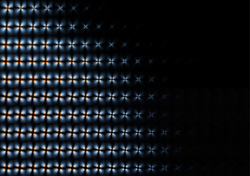Professor Shikha Nangia Named as the Milton and Ann Stevenson Endowed Professor of Biomedical and Chemical Engineering
The College of Engineering and Computer Science (ECS) has announced the appointment of Shikha Nangia as the Milton and Ann Stevenson Endowed Professor of Biomedical and Chemical Engineering. Made possible by a gift from the late Milton and Ann Stevenson,…


 SMPs are a class of “smart” materials that can switch between two shapes, from a fixed (temporary) shape to a predetermined permanent shape. Shape memory polymers function as actuators, by first forming a heated article into a temporary shape and cooling. Then, by using a second stimulus (i.e. heat), the article can spring back to its original shape.
SMPs are a class of “smart” materials that can switch between two shapes, from a fixed (temporary) shape to a predetermined permanent shape. Shape memory polymers function as actuators, by first forming a heated article into a temporary shape and cooling. Then, by using a second stimulus (i.e. heat), the article can spring back to its original shape. Mather created a temperature gradient plate by applying heat at one end and using a cooling unit at the other end. The actual temperature gradient was verified by measuring different positions along the plate. The SMP was cured on this plate to set the different transition temperatures.
Mather created a temperature gradient plate by applying heat at one end and using a cooling unit at the other end. The actual temperature gradient was verified by measuring different positions along the plate. The SMP was cured on this plate to set the different transition temperatures.